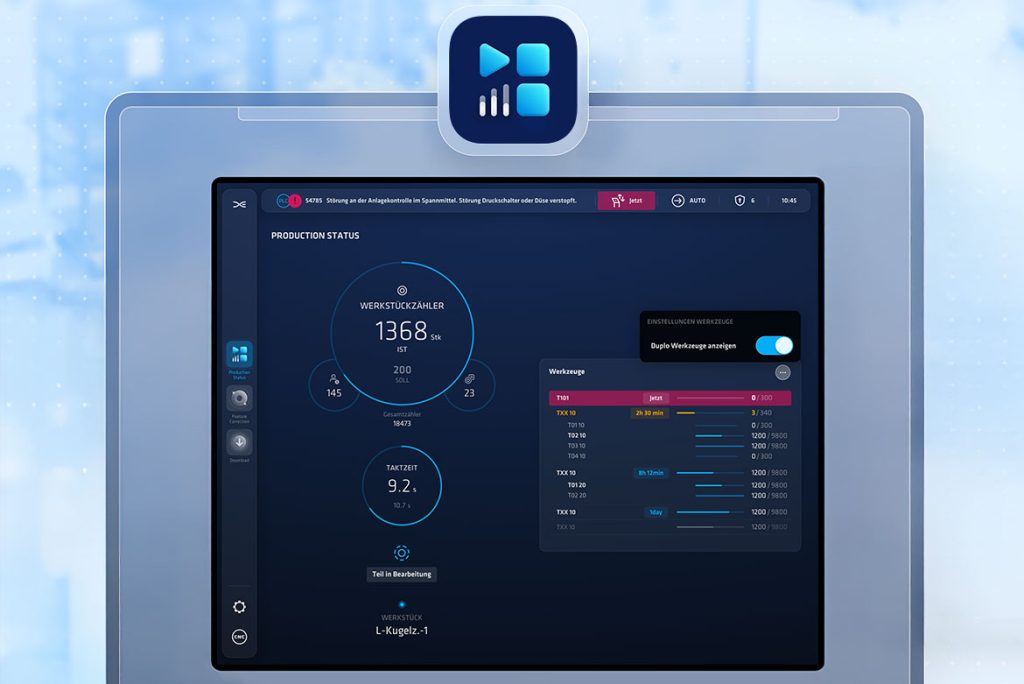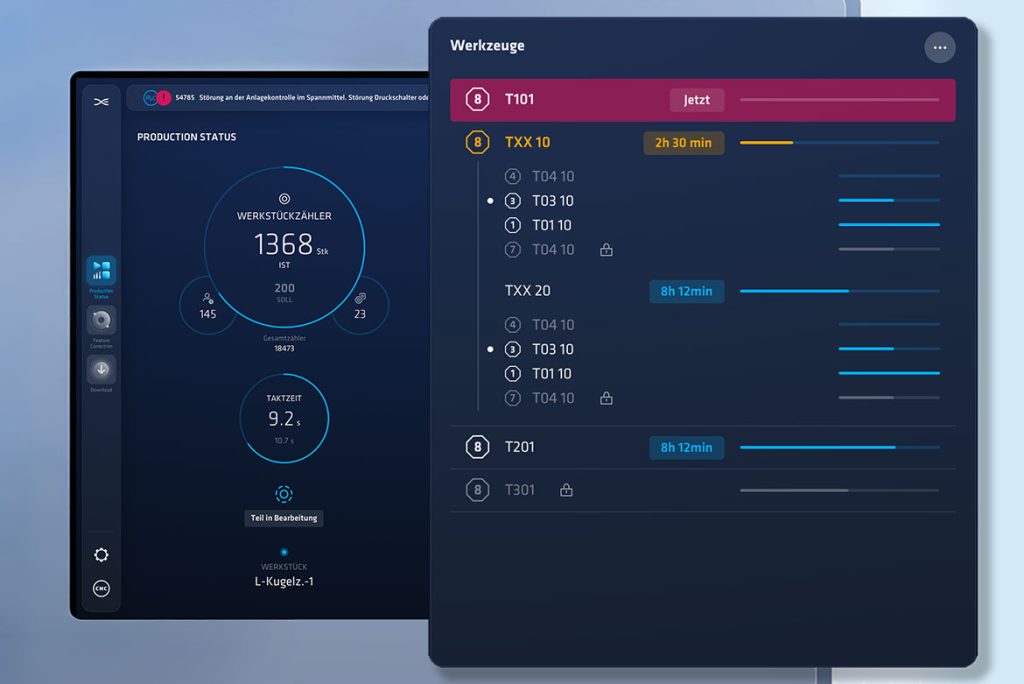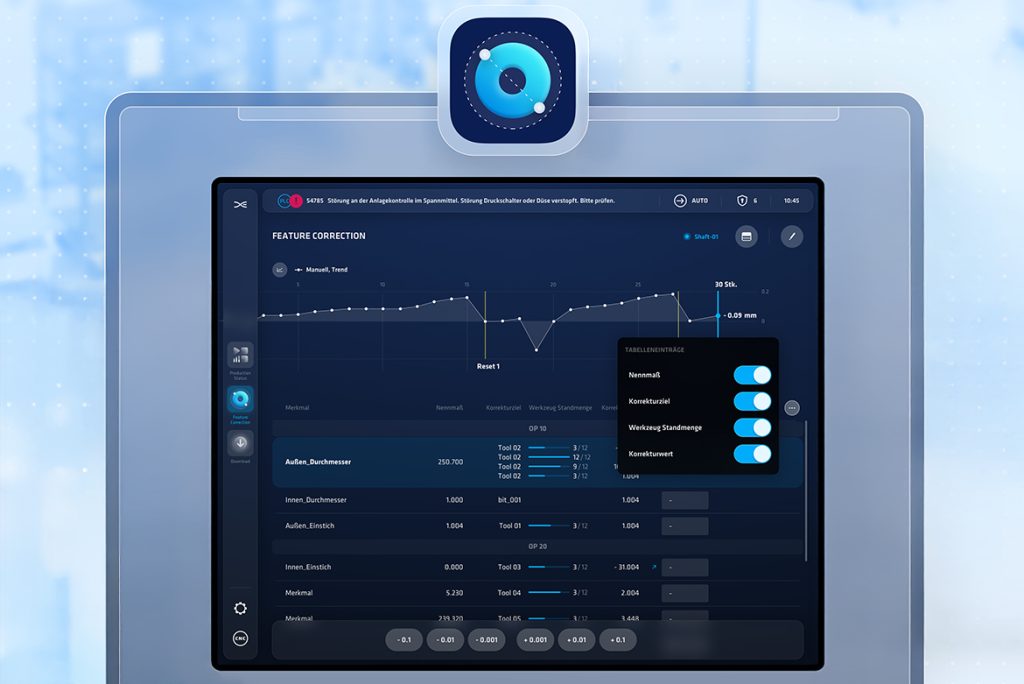In today’s interview, we talk to Patrick Knab, Team Leader EDNA Operations. He gives us exciting insights into the extended functions of EDNA ONE, which significantly simplify the operation and parameterization of machines. In particular, we look at the benefits of “Feature Correction” and “Production Status” – two key functions that make the production process more efficient, safer and more reliable.
What specific advantages does EDNA ONE offer for the operation and machine setup?
The example of EDNA ONE shows how a modern UX/UI concept can provide meaningful support for production. EDNA ONE applications are functional software supplements to native control functions. Simplifying the operation reduces the possibility of the machine setter making incorrect entries during operation. In addition, set-up is often faster, e.g. through assisted suggestions or the reduction of parameters. On the other hand, the integration of intelligent technologies and functions can automate specific tasks, minimizing operator input.
What are the benefits?
Let’s start with the “Production Status” application. The idea behind “EDNA Production Status” is that the operator knows what is happening in the machine at all times and can react quickly to changes. The most important production data is comprehensible, clearly summarized and visible at a glance. This includes information in the form of different piece counters, a configurable cycle time display, the processing status of the workpiece and the display of the tools set up, including the tool life. A particularly valuable function in this context is the tool change prediction. There are no nested submenus, all interactions – where necessary – are carried out directly on the display element with a simple click. There is also no need to search for production-relevant information and no need to switch between different systems.

EDNA ONE Production Status: Real-time data such as cycle time, piece counter and tool status are displayed. The user interface provides a clear overview, including upcoming tool changes.
What is behind the “Tool change prediction” function?
The tool change prediction function monitors the current use and wear of the tools and indicates when a change is necessary – also taking into account existing Duplo tools. The time information allows the operator to plan ahead and provide tools promptly. This prevents unexpected machine downtime.

Displays the remaining tool life and the estimated time of the next tool change. The tool change forecast ensures that the tools are provided in good time to avoid downtimes.
Please explain the functions of “Feature Correction” in more detail.
The deliberate separation between operation and machine setter creates an “abstraction level” that enables the operator to correct features quickly and easily. The input of geometry and wear parameters via native surfaces requires the operator to know which tool and which cutting edge is used for the desired feature. The direction of action of the tool or cutting edge must also be known. With “Feature Correction,” the operator only has to enter the correction value for the desired feature. Alternatively, “individually definable pairs of values as buttons” can also be used. A “linear trend correction” – i.e. automatic correction of wear depending on the workpieces produced – is also possible. The simple integration of digital drawings in common image formats ensures that the operator has a clear visual reference at all times. This is particularly useful when machining complex workpieces. Another interesting function is the “trend visualization.” This allows historical correction trends to be tracked and displayed graphically. This means that correction entries and automatically applied correction values can be traced.

EDNA ONE Feature Correction for carrying out corrections. The interface shows a graphical configuration of the features as well as historical correction trends.
What does this mean for the setup or machine operator?
Of course, the features must be assigned to tools, wear data, etc. This information is ultimately required by the control system. However, while the knowledge, i.e. the assignment to the geometry and wear data, direction of action, etc., must be constantly kept in mind in the classic system, in the case of “feature correction” this is only parameterized once by a “knower” – in our example by a machine operator. We have simplified the process considerably as a result. Machine setup & parameterization is quick and easy to understand at all times. The steps required are reduced to the essentials and are supported by automatic completions, input checks and dialogs. This speeds up the set-up process and helps to minimize incorrect entries. Created correction programs can be easily managed in the clear display, i.e. copied, deleted, edited and renamed. With the import and export manager, you can create data backups of individual or all correction programs with just a few clicks. These can be transferred to identical machines if required.